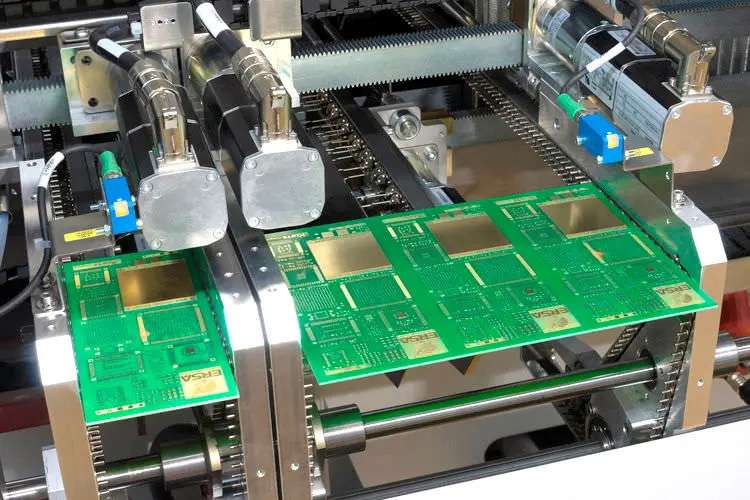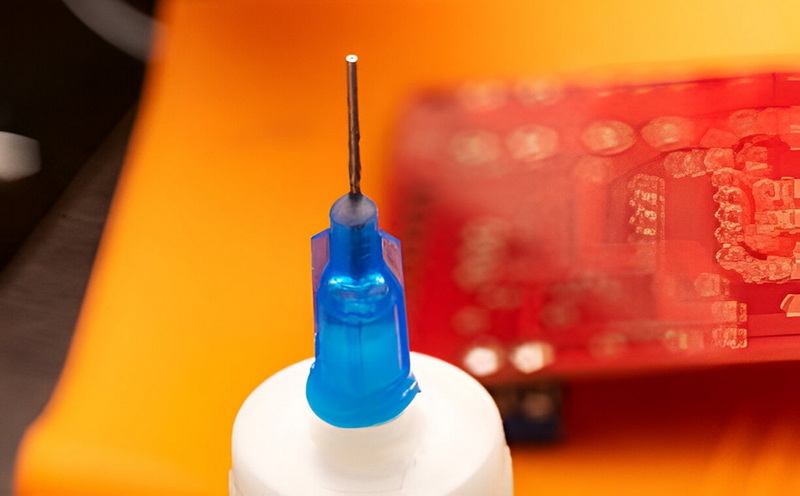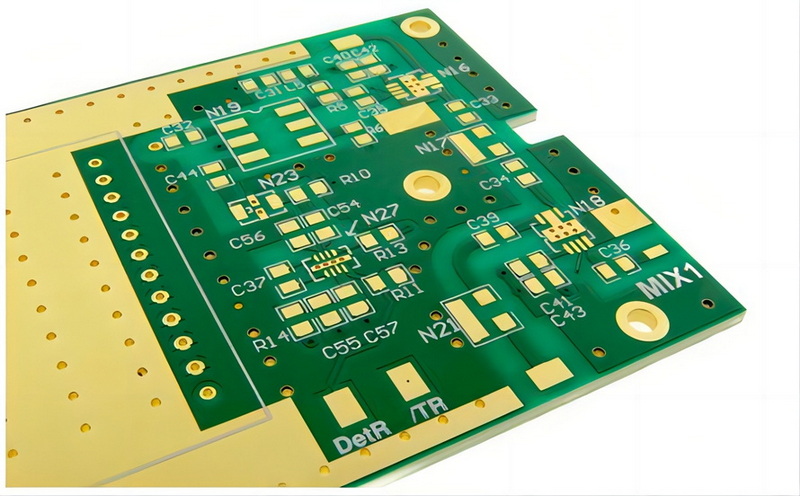Content Menu
● Introduction to Laser Cut SMT Stencils
>> Advantages of Laser Cut SMT Stencils
● Environmental Impacts of Laser Cut SMT Stencil Production
>> Reduced Material Waste
>> Energy Efficiency
>> Reduced Emissions
>> Minimal Post-Processing
● Comparison with Chemical Etching
● Market Trends and Growth
● Challenges and Opportunities
● Future Trends in SMT Stencil Technology
● Environmental Sustainability in the Electronics Industry
● Conclusion
● FAQs
>> 1. What are the primary environmental benefits of laser cut SMT stencil production?
>> 2. How does laser cutting compare to chemical etching in terms of environmental impact?
>> 3. What drives the growth of the laser cut SMT stencil market?
>> 4. What are some challenges faced by manufacturers in adopting laser cut SMT stencil technology?
>> 5. How does the integration of automation and Industry 4.0 principles impact the demand for laser cut SMT stencils?
● Citations:
The production of laser cut SMT (Surface Mount Technology) stencils is a critical process in the electronics manufacturing industry, particularly in the assembly of printed circuit boards (PCBs). As the demand for miniaturized electronic devices continues to rise, the need for precise and efficient manufacturing techniques has become increasingly important. Laser cutting technology has emerged as a preferred method for producing SMT stencils due to its high precision, speed, and versatility. However, like any industrial process, laser cut SMT stencil production has environmental implications that need to be understood and addressed.

Introduction to Laser Cut SMT Stencils
Laser cut SMT stencils are essential tools in the electronics manufacturing sector, enabling the precise application of solder paste onto PCBs. This precision is crucial for ensuring the reliability and functionality of electronic components. The laser cut SMT stencil market is experiencing significant growth, driven by advancements in laser technology and the increasing demand for high-precision components in miniaturized electronic devices.
Advantages of Laser Cut SMT Stencils
1. Precision and Accuracy: Laser cutting allows for the creation of highly accurate apertures, which is essential for fine-pitch components and complex PCB designs. This precision ensures proper solder joint formation and prevents issues such as bridging or open circuits[1][5].
2. Speed and Efficiency: The process is faster than traditional chemical etching methods, reducing production lead times and enabling quicker turnaround for electronics manufacturers[1][4].
3. Durability: Laser-cut stencils are more durable than etched versions, lasting longer and requiring less frequent replacements. They are typically made from high-quality stainless steel, providing excellent resistance to wear and tear[1][4].
4. Design Flexibility: Laser systems can cut any aperture size or shape, offering greater design flexibility compared to etching methods. This allows for innovative stencil geometries that optimize print performance and solder deposition[4][5].
Environmental Impacts of Laser Cut SMT Stencil Production
While laser cutting offers numerous advantages over traditional methods, it also has environmental implications that must be considered:
Reduced Material Waste
Laser cutting is a precise process that minimizes material waste. Unlike traditional cutting methods, which can generate significant scrap material, laser cutting ensures that only the necessary material is removed. This not only conserves resources but also reduces the costs associated with waste disposal[2][3].
Energy Efficiency
Laser cutting is an energy-efficient process compared to traditional mechanical cutting methods. It requires less energy to operate, which contributes to lower greenhouse gas emissions and reduced environmental impact[2][3].
Reduced Emissions
Unlike some traditional cutting methods that produce harmful fumes and particles, laser cutting is a relatively clean process. It does not use cutting fluids or chemicals, reducing the risk of air pollution. However, the process can still generate metal fumes and particulate matter, necessitating proper ventilation and filtration systems to ensure a safe working environment[2][3].
Minimal Post-Processing
Laser-cut stencils typically require less post-processing compared to etched stencils. This reduces the need for additional chemicals or energy-intensive processes, further minimizing environmental impact[2][4].
Comparison with Chemical Etching
Chemical etching, a traditional method for producing SMT stencils, involves using hazardous chemicals that can pose significant environmental risks. In contrast, laser cutting is a cleaner and more sustainable method:
- No Chemical Waste: Laser cutting eliminates the need for chemical waste disposal and the use of hazardous etchants[4].
- No Etch Resist Stripping/Cleaning: Unlike etching, laser cutting does not require the stripping or cleaning of etch resist materials, reducing chemical usage[4].
- Smaller Footprint: Laser cutting equipment generally has a smaller footprint than etching equipment, contributing to reduced space requirements and energy consumption[4].

Market Trends and Growth
The laser cut SMT stencil market is projected to grow significantly over the coming years, driven by technological advancements and increasing demand for precision in electronics manufacturing. Key drivers include:
- Miniaturization of Electronic Devices: The trend towards smaller, more complex electronic components necessitates high-precision manufacturing processes[1][5].
- Advancements in Laser Technology: Improvements in laser cutting technology have enhanced efficiency, accuracy, and design flexibility[1][4].
- Adoption of Industry 4.0 Principles: The integration of automation and smart manufacturing processes increases the demand for precise and reliable SMT stencils[5].
Challenges and Opportunities
Despite the advantages of laser cut SMT stencils, there are challenges and opportunities that manufacturers must address:
- High Initial Costs: The investment in laser cutting equipment can be a barrier for small and medium-sized enterprises[4].
- Material Sensitivity: Laser cutting is sensitive to material quality and thickness, which can limit its adaptability to various board designs and materials[6].
- Emerging Opportunities: The integration of automation and Industry 4.0 technologies presents opportunities for growth and innovation in the market[5].
Future Trends in SMT Stencil Technology
The evolution of SMT stencil technology continues to drive innovation:
- Nano-coatings and Surface Treatments: Advanced nano-coatings improve solder paste release and reduce adhesion, enhancing print quality and fine-pitch component printing. They also require less frequent cleaning, prolonging stencil life[5].
- Additive Manufacturing and Customization: 3D printing enables custom-designed SMT stencils with intricate geometries and tailored aperture designs. This flexibility accommodates unique PCB layouts and component configurations[5].
- Integrated Inspection and Quality Assurance: Emerging technologies integrate automated inspection systems into the stencil printing process, enabling real-time monitoring of solder paste deposition quality[5].
Environmental Sustainability in the Electronics Industry
As the electronics industry continues to evolve, environmental sustainability is becoming increasingly important. Manufacturers are adopting more sustainable practices, such as using biodegradable and lower-toxicity solder pastes, to reduce environmental impact[6]. The shift towards cleaner manufacturing processes, like laser cutting, aligns with these efforts by minimizing waste and emissions.
Conclusion
In conclusion, the production of laser cut SMT stencils offers several environmental benefits over traditional methods, including reduced material waste, energy efficiency, and minimal emissions. However, it is crucial to address the challenges associated with this technology, such as high initial costs and material sensitivity. As the laser cut SMT stencil market continues to grow, driven by advancements in technology and increasing demand for precision in electronics manufacturing, manufacturers must prioritize sustainability and innovation to meet future environmental and production challenges.

FAQs
1. What are the primary environmental benefits of laser cut SMT stencil production?
- The primary environmental benefits include reduced material waste, energy efficiency, and minimal emissions compared to traditional cutting methods.
2. How does laser cutting compare to chemical etching in terms of environmental impact?
- Laser cutting is more environmentally friendly than chemical etching as it eliminates the use of hazardous chemicals and reduces waste disposal needs.
3. What drives the growth of the laser cut SMT stencil market?
- The market growth is driven by technological advancements, the miniaturization of electronic devices, and the increasing adoption of Industry 4.0 principles in manufacturing.
4. What are some challenges faced by manufacturers in adopting laser cut SMT stencil technology?
- Challenges include high initial costs, material sensitivity, and the need for specialized equipment, which can be barriers for smaller enterprises.
5. How does the integration of automation and Industry 4.0 principles impact the demand for laser cut SMT stencils?
- The integration of automation increases the demand for precise and reliable SMT stencils, as it enhances production efficiency and requires high-quality components.
Citations:
[1] https://rigidflexpcb.org/smt-stencil-and-laser-stencil/
[2] https://e-ims.com/the-environmental-sustainability-of-laser-cutting/
[3] https://www.acra.com.au/5-facts-about-the-environmental-impact-of-laser-cutting-in-sheet-metal-manufacturing/
[4] https://www.raypcb.com/laser-cut-stencils-and-chemical-etching-stencils/
[5] https://jlcpcb.com/blog/guide-to-smt-stencils-in-pcb-assembly
[6] https://www.elepcb.com/blog/pcb-stencil-smt-assembly/
[7] https://www.ipc.org/system/files/technical_resource/E6&S35_03.pdf
[8] https://stencillaser.lpkf.com/en/technology/benefits-laser-cutting-stencil
[9] https://pcbpit.com/smt-stencil-a-comprehensive-guide/
[10] https://www.lpkfusa.com/products-technologies/pcb-production-lasers/about-stencil-manufacturing
[11] https://razorlab.online/guide-to-laser-cut-stencils/
[12] https://www.wiseguyreports.com/reports/laser-cut-smt-stencil-market
[13] https://www.protoexpress.com/kb/smd-stencils-overview/
[14] https://www.stentech.com
[15] https://www.kingfordpcb.com/pcb-manufacturing/3178.html
[16] https://www.linkedin.com/pulse/what-impact-does-stencil-have-processing-sjq4c
[17] https://hero.epa.gov/hero/index.cfm/reference/details/reference_id/7146538
[18] https://www.pcbelec.com/the-production-process-of-pcb-smt-stencil.html




















